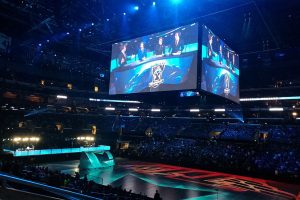When eSports first emerged, the industry relied on (and served) diehard fans and video game players. While neither were in short supply, the growing popularity of international competitions across a variety of games meant the budding world was in for an overhaul.
More specifically, eSports needed to develop (or entirely overhaul) its primary revenue model. At first, attempts by major companies and brands to enter the eSports market failed to take off because the industry was being treated as eponymous with regular sports.
For major leagues like the NFL or the MLB, ticket sales account for a massive chunk of revenue. Additionally, broadcasting rights help fund leagues and provide various teams or divisions within a league to earn even more.
Models that work for traditional sports don’t necessarily apply to the world of eSports for a variety of reasons. First, eSports cross global boundaries, which affects how leagues and competitions are structured, as well as considerations involving language and time zones. Second, sponsorship deals have been slow to take off given the lack of stability offered by broadcasting deals, ticket sales, and prize pools.
On the other hand, the eSports industry is developing its own identity. Current business models may not be as robust as typical sports leagues, but they have incredible promise which has led to an inundation of investment in the past two years.
New Platforms & Viewership
A Newzoo Global eSports Market Report estimates that there will be a total of 646 million viewers for eSports by 2023, jumping from 2020’s 495 million. Unlike traditional sports, the games competed in are owned as intellectual property by the company that developed the game.
Games aren’t played on a field—they’re streamed. Huge platforms like Twitch facilitate major competitions, like 2019’s Dota 2 competition ‘The International’, which saw 1.1 million viewers at its peak.
Harnessing the viewing power for businesses looking to advertise is complicated. Viewers may watch the competition directly, or they may watch another live Twitch stream to see a favorite streamer react to the live stream.
This is uncharted territory for the business world, where big-name brands seek to harness spectators with a potent ad that stands out. At the moment, major brands are glomming onto individual players, teams, and leagues rather than channels for viewing to reach consumers.
Big-Name Sponsors
Though slow to gain traction due to an underdeveloped and non-standardized structure of eSports, there’s now no shortage of big-name sponsors. These include Intel, who has invested in the Overwatch League; the US Air Force, who sponsors a CSGO team, Cloud9; and Disney’s Marvel, who now partners with Team Liquid.
Now, the teams and leagues mentioned above have billions in investment, as well as credibility for solvency that comes with being associated with big names. As teams and leagues expand, the industry will continue to incorporate more fanfare offered in regular sports.
The billion-dollar industry is set to see an influx of wagers from analysts covering major league sports as competitions and eligibility rules are standardized worldwide. Still, eSports has many challenges to overcome before there’s a comparable betting market like those surrounding European football.

Challenges Going Forward
Major considerations that the eSports industry must reconcile are largely focused on player and team rights. Sports leagues the world over include associations that protect player rights and facilitate trade negotiations.
Unlike traditional athletes, eSports players are able to jump from one game to the other with a bit more ease. The industry would benefit from standardizing rules and regulations between all leagues.
Additionally, various tiers of competitions should be established. In the US, certain colleges are beginning to incorporate eSports teams as part of their NCAA programs. Developments like these will help the industry stagger competitions between junior players and adults, as well as define specific conditions that protect the interest of young players and the integrity of NCAA competitions as a collegiate sport.
Currently, there are 79 competitions worldwide. Each still has the potential to become the defunct competition for a given game, which means investments are now highly competitive. As leagues define competition tiers based on age or talent, the business of eSports could take on a similar major league-NCAA structure common across the US in traditional sports.






 Your total news and information resource for all things Science, Technology, Engineering / Mathematics, Art, and Medicine / Health.
Your total news and information resource for all things Science, Technology, Engineering / Mathematics, Art, and Medicine / Health.
Leave a Comment